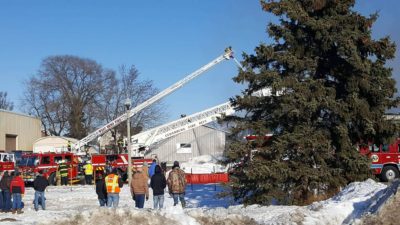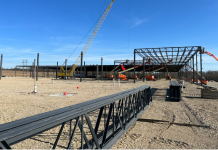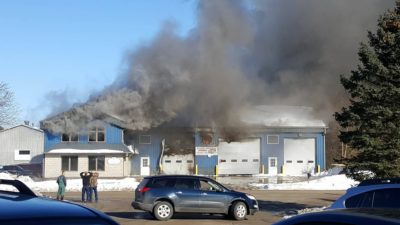Dec. 28, 2016 – Allenton, WI – I have heard there is a great deal of concern as to the number of departments responding to fire calls. I am hoping that I may shed some light on this concern.
Much of the information I share can be found at the MABAS-Wisconsin website.
I should start with the fact our society has become one that is very mobile, very involved in community/school activities and is transient.
What do I mean by this? When I joined our fire department [Allenton Volunteer Fire Department] in the mid-1960’s most of our members worked and lived in Allenton. Through the years many of these small businesses have gone to the wayside, many of the small farms have left our society and our community residents now work outside of our small towns. In addition many of our remaining companies have become part of larger companies that have no close ties to their communities.
 The need for first responders [firefighters and emergency medical personnel] has grown. However, the resources have dwindled.
The need for first responders [firefighters and emergency medical personnel] has grown. However, the resources have dwindled.
In addition, taxpayers watch very closely where their dollars are being spent and how they are being spent. When I started most of our money came from fund raisers and in-kind donations.
A business man would leave his place of business to go on a call to help someone. Companies in many communities no longer let their workers leave for a fire or EMS call. Our active members work out of town in most cases, have kids involved in many school activities and have many other organizations asking for their time. Also with increased drive times to and from work, it is more difficult to ask people to commit to the training.
The training for a Firefighter Level One is no longer “get on the truck and we will teach you.” It is 90+ hours of training followed by testing. For a basic Emergency Medical Technician we are committed to almost 200 hours of training, shadowing, and testing. To become a higher level of care provider we are asking for more hours. All this scares people away!
Additionally the products we use every day, the house we build, the lifestyles we follow have changed. In the past a fire in a house built 30 years ago with legacy furniture, you would have 17 to 20 minutes to escape, in today’s house you have 3 to 4 minutes. There are many theories on the growth of a fire. It is said a fire can double in size every 1 minute to every 3 minutes if it burns unchecked. There are many factors that play into the growth.
In the 1990’s Illinois started a program called Mutual Aid Box Alarm System [MABAS]. This system allowed the initial department responding to a call of a fire to request help in a systematic way. The primary purpose was to not deplete neighboring departments of all their equipment. In addition it would require that pre-planning area, structures, hazards, etc. for the type of and number of apparatus and personnel needed. In 2004 MABAS was introduced into Wisconsin as a concept to consider when requesting mutual aid. In 2006 Gov. Jim Doyle signed into law legislation that set up a system state wide. The division lines normally follow county lines, i.e. Washington County, Ozaukee County, etc…
Fire Departments across the state have sat down among their members and with other fire departments to determine what equipment would be available. Some departments have ladder trucks, while others may have specialized air tank filling systems, or foam-application equipment, or high-level rescue equipment and skills.
With our changing society causing less manpower availability, changing building constructions and materials in our homes, more expensive firefighting equipment, and restrictive budgets plus other factors, MABAS has grown.
Normally for response a fire department has a set number apparatus and people they can depend on being available. This initial response is called “still” this would be for a small garage or Dumpster fire.
The next level is a “Working Still” which would be a somewhat larger incident, 3-car accident, larger shed, and 3 to 4 acre wild land fire. At a working still the department may request more of their manpower, additional manpower from a close neighbor, including an apparatus that can pump water and if it is in rural area additional tanker[s] [now called tender, which primary purpose is to carry water].
Normally firefighters come on what is called an engine (a fire truck that carries some water and has a large pump capable of pumping 750 gallons per minute or more). On a MABAS call, the agreement is that this will have at least 4 personnel [all trained to Firefighter I], a squad would could be a vehicle with NO pump but is capable of carrying firefighting equipment [axes, etc.] and 4 personnel.
Tankers/Tenders in our area carry 1,500 gallons to 3,500 gallons of water with a “dump” valve that can flow at least 1,000 gallons per minute into a portable tank [pond]. With the advent of a larger incident the equipment and manpower needed can grow systematically. See the following explanation from the Wisconsin MABAS site.
“By using MABAS, the Incident Commander [IC] is assured of:
√ A specific minimum number of firefighters per unit type
√ A specific level of training/certification of responders
√ The other departments will have the same radio frequencies
√ The other departments will use the same terminology
√ All costs and liabilities are borne by the outside departments coming to the stricken community
√ Other departments will cover the community having the incident
√ As many additional “sets” (alarms) as needed can be called for
This allows the IC to focus on the emergency at hand and the tactics to be deployed.”
One of the concepts of MABAS is to prearrange the calls for assistance in such a way that no one department providing assistance sends all of their equipment and personnel to help a neighbor. The concept is when there is a call where MABAS is activated, several departments send some of their resources, but no one sends all of their resources. This is why you hear about “several” fire departments fighting a fire.” Each department involved sent only limited resources.
Once on scene the apparatus are directed to a “Staging Area” where an officer will take the accountability tag and note their presence. As the situation grows or personnel need to relieve due to physical or weather stress, these personnel in staging are advanced to the Operations Officer who will at that time direct them to a sector/division [east side of a building or interior or to the roof,etc.]
Through the years firefighting has proved to be a very dangerous profession/avocation. Thus firefighters noted that if we have a firefighter get lost, or injured, we are the only ones that will save him/her. This brought about what is called Rapid Intervention Team [R.I.T.]. These teams are requested from departments that have had their members go through an intensive training scenario with periodic refreshers of their skills. The primary purpose of R.I.T. is to assure that all safety pre-cautions are being followed, that there are alternative avenues to leave a building if the need arrives or for the team to go in to assist the down firefighter. These four people have no other responsibility than to monitor for calls for help and to respond on a moment’s notice safely and effectively.
The Wisconsin’s use of MABAS, along with many other neighboring states, provides for solution of a local problem with regional resources. For one, all the departments use the SAME radio frequencies. This came about as a result of the inter-communications obstacles on 9-11. Participation in MABAS has been strictly on a volunteer bases by counties. The counties in our area have been involved for some time using this system.
Many incidents have used MABAS with a good deal of success. Some such incidents were the huge car accident in a snow storm in the Germantown/Menomonee Falls area a few years ago, the three lost teenagers in Iron Ridge this past summer, plus a number of fire calls.
To sum up this discussion, yes departments are reaching out further for help at incidents to assure a safe, reasonable and effective approach to mitigate an emergency scene. A number of factors have contributed to this—fewer people available to be members of fire departments [especially during the daytime], change in building construction, an attitude to extinguish the fire and not one of protecting exposures and allow the building burn down, sharing resource with others, and not being too proud to ask for help.
MABAS is a systematically deployment of equipment and personnel from a region and not entirely from one or two other departments. This expanded reaching out further for help at incidents is done to assure a safe, reasonable and effective approach to mitigate an emergency scene.








This explains the MABAS system very well. I will share this around our area if OK with you Thank you Ron.